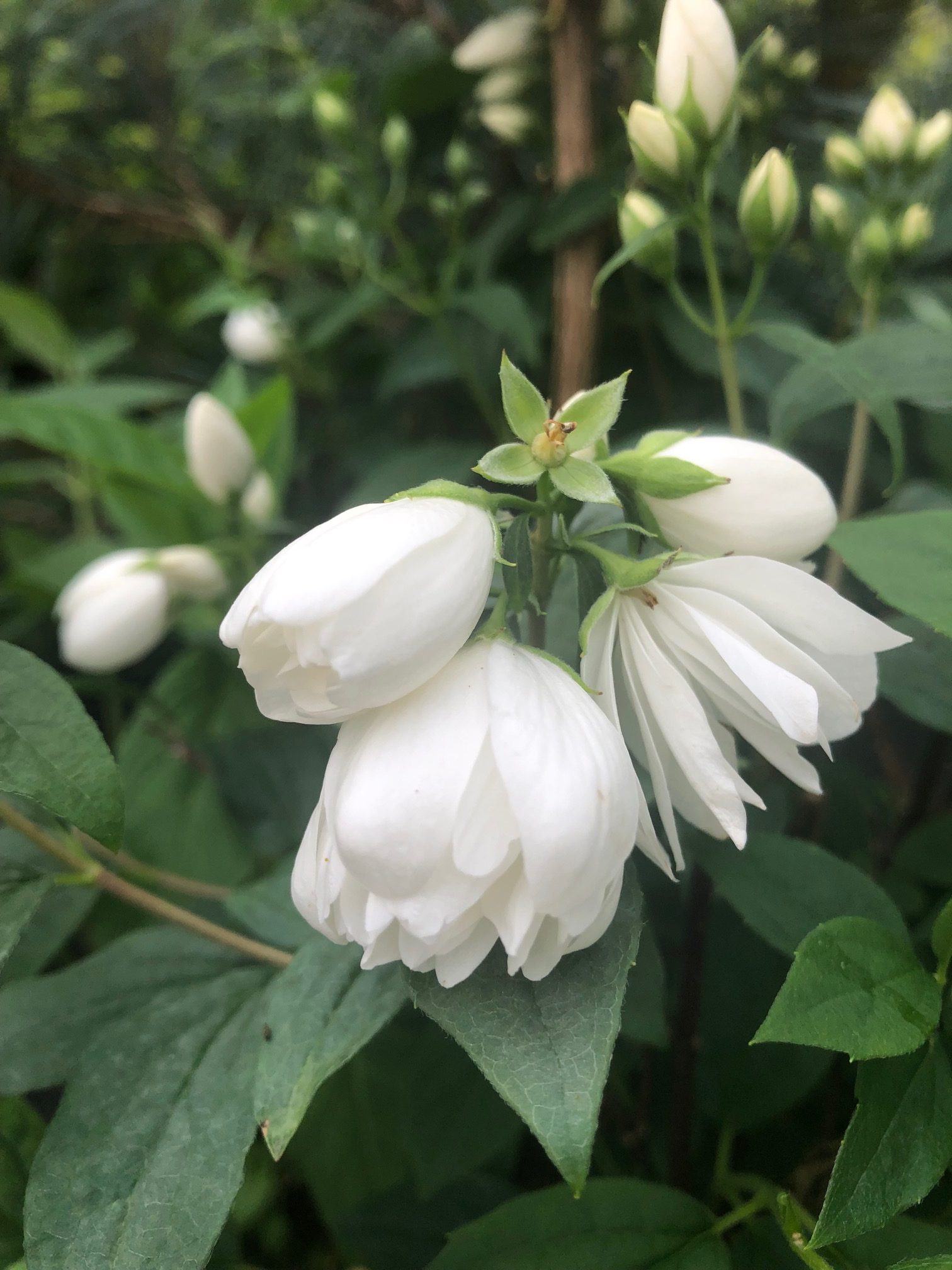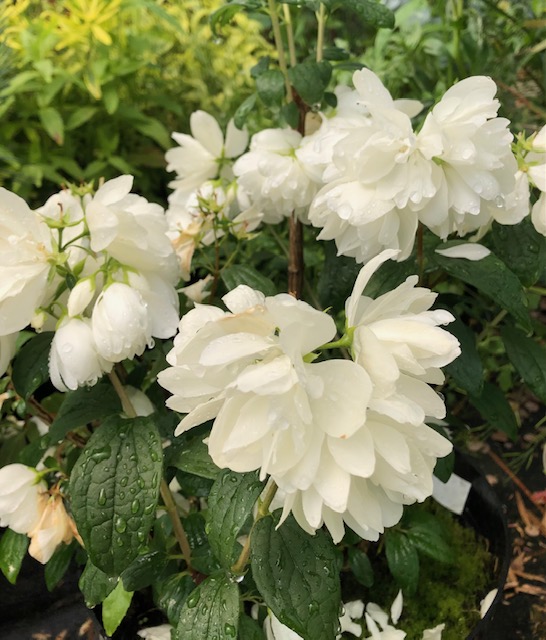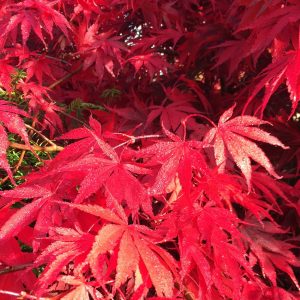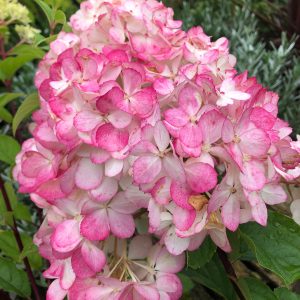Philadelphus Snowbelle
Mock Orange
Philadelphus Snowbelle is a beautiful garden plant which belongs to the hydrangea family, and is commonly known as the mock orange. It is a popular choice for gardeners who want to add a touch of elegance and fragrance to their garden.
The flowers of Philadelphus Snowbelle are its main attraction. They are pure white, double, and very fragrant, with a scent that resembles that of orange blossoms. The flowers are produced in clusters of 3 to 6, which are 1 to 2 inches in diameter. They bloom in late spring to early summer. The leaves turn buttery yellow in Autumn.
MORE
Philadelphus Snowbelle is a deciduous shrub that can grow up to 6 feet tall and 6 feet wide. It has a rounded, dense form with arching branches that give it a graceful appearance. The foliage is dark green and shiny, with ovate leaves that are 2 to 4 inches long. The leaves turn yellow in the fall, providing a beautiful contrast against the white flowers.
The flowers of Philadelphus Snowbelle are its main attraction. They are pure white, double, and very fragrant, with a scent that resembles that of orange blossoms. The flowers are produced in clusters of 3 to 6, which are 1 to 2 inches in diameter. They bloom in late spring to early summer and last for about two weeks.
Philadelphus Snowbelle is easy to grow and care for, making it a popular choice for both novice and experienced gardeners. It prefers a well-draining soil that is rich in organic matter and is neutral to slightly acidic. It also prefers full sun to partial shade, although it can tolerate some shade.
To plant Philadelphus Snowbelle, dig a hole that is twice as wide as the root ball and as deep as the plant’s container. Mix some compost or peat moss with the soil and backfill the hole. Water the plant well and mulch around it to retain moisture and suppress weeds.
Philadelphus Snowbelle requires regular watering, especially during dry spells. However, it does not like to be waterlogged, so make sure the soil drains well. Fertilize the plant in early spring with a balanced fertilizer to encourage healthy growth and flowering.
Pruning Philadelphus Snowbelle is important to keep it looking healthy and tidy. The best time to prune is after the plant has finished flowering, in late spring to early summer. Remove any dead, damaged, or diseased wood, as well as any branches that are crossing or rubbing against each other. Cut back about one-third of the old wood to promote new growth and flowering.
Philadelphus Snowbelle can be propagated by taking softwood cuttings in early summer. Take a cutting that is about 4 to 6 inches long, remove the lower leaves, and dip the cut end in rooting hormone. Plant the cutting in a pot filled with moist potting soil and cover it with a plastic bag to retain moisture. Keep the pot in a shaded area and water it regularly. After a few weeks, the cutting should develop roots and can be potted up and grown on and planted in the garden later.
Philadelphus Snowbelle is a versatile plant that can be used in many ways in the garden. It makes an excellent specimen plant, with its graceful form and fragrant flowers. It can also be used as a hedge or a screen, as it forms a dense, bushy growth that provides privacy and beauty.
In addition to its ornamental uses, Philadelphus Snowbelle has some practical applications as well. The leaves and bark contain a compound called philadelphine, which has been used in traditional medicine.
Philadelphus Snowbelle is a great companion plant for other shrubs and perennials. It pairs well with roses, peonies, and other flowering plants that bloom in the same season. It also attracts bees and butterflies to the garden, making it a valuable plant for pollinators.







Reviews
There are no reviews yet.